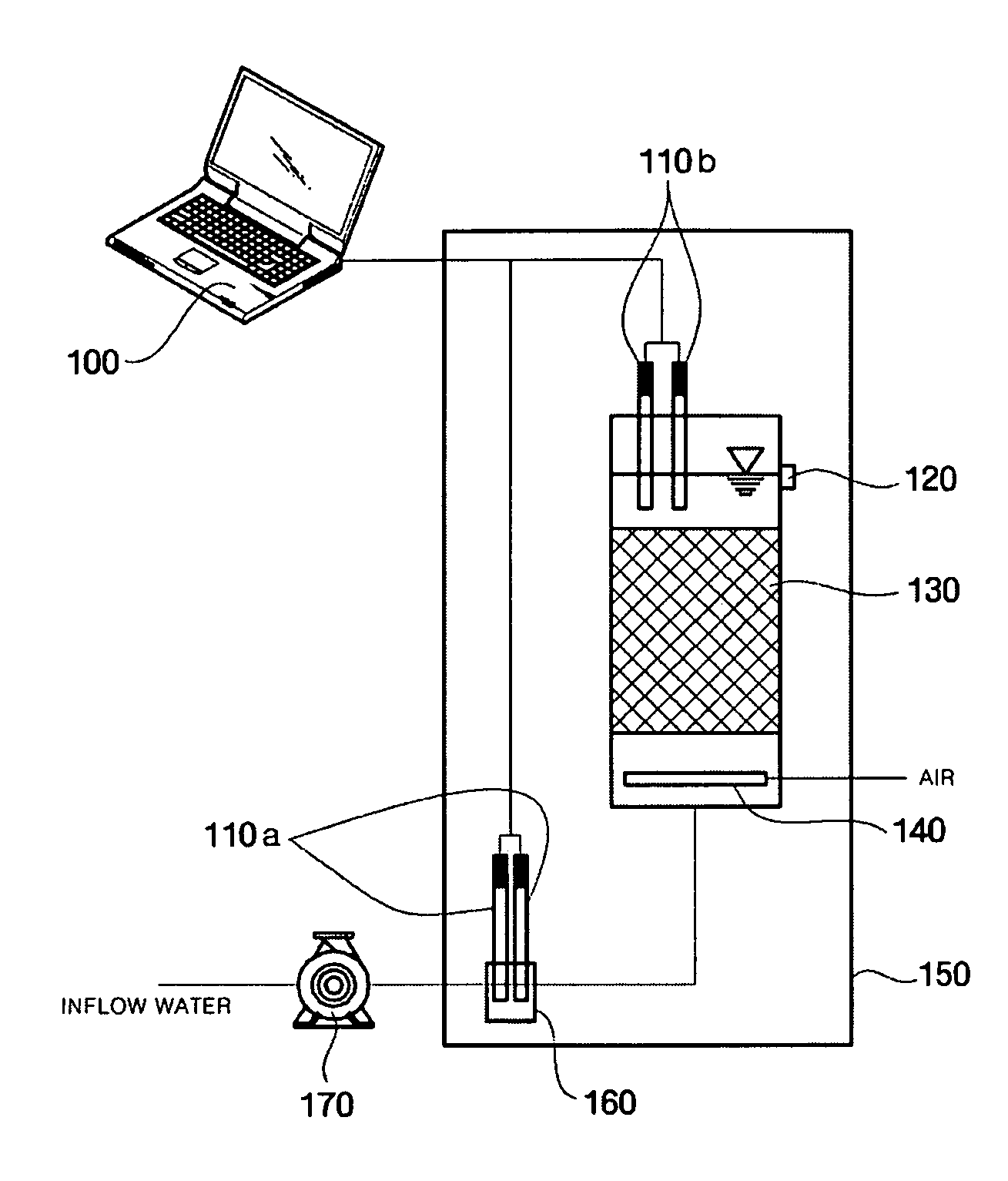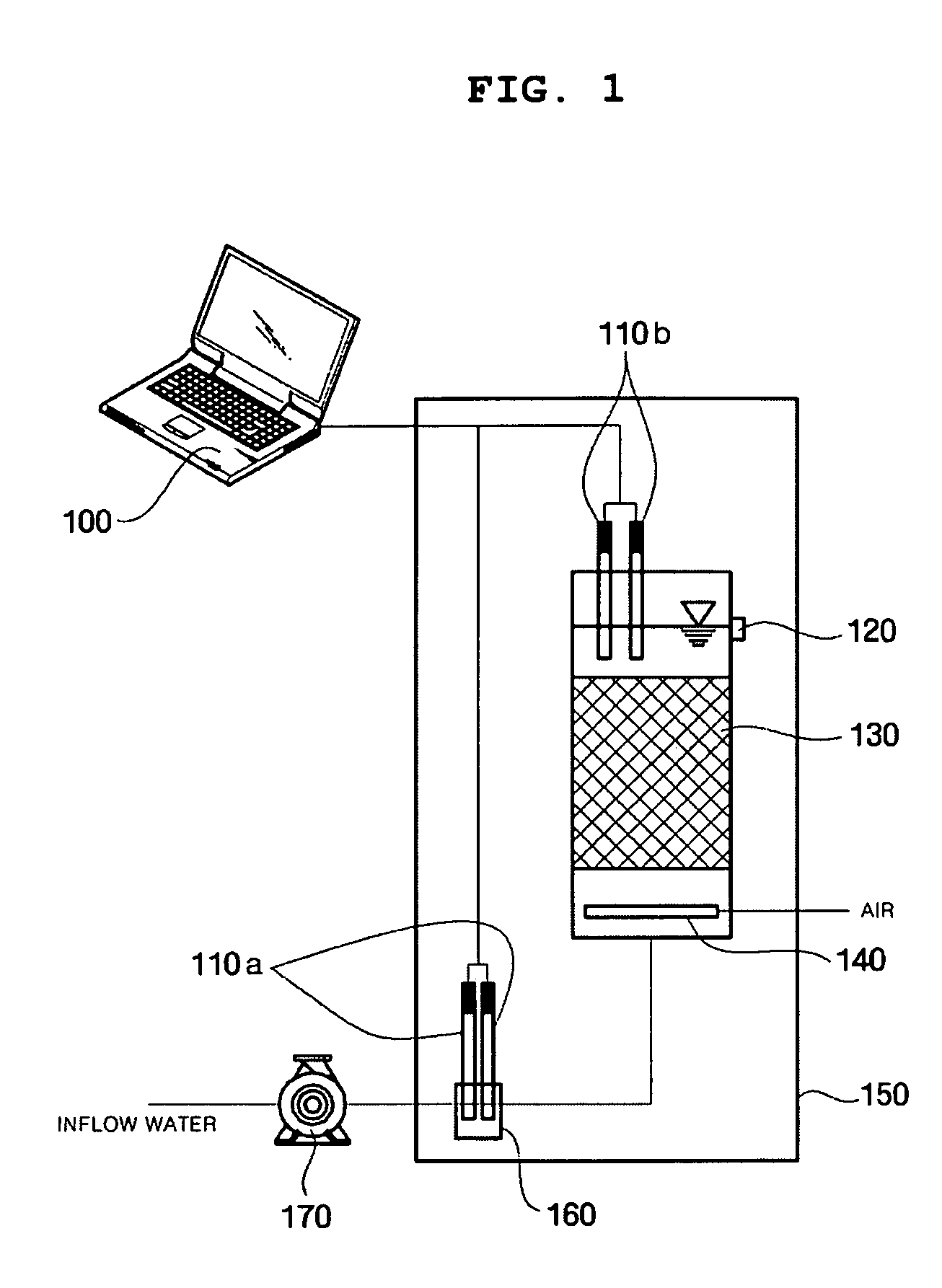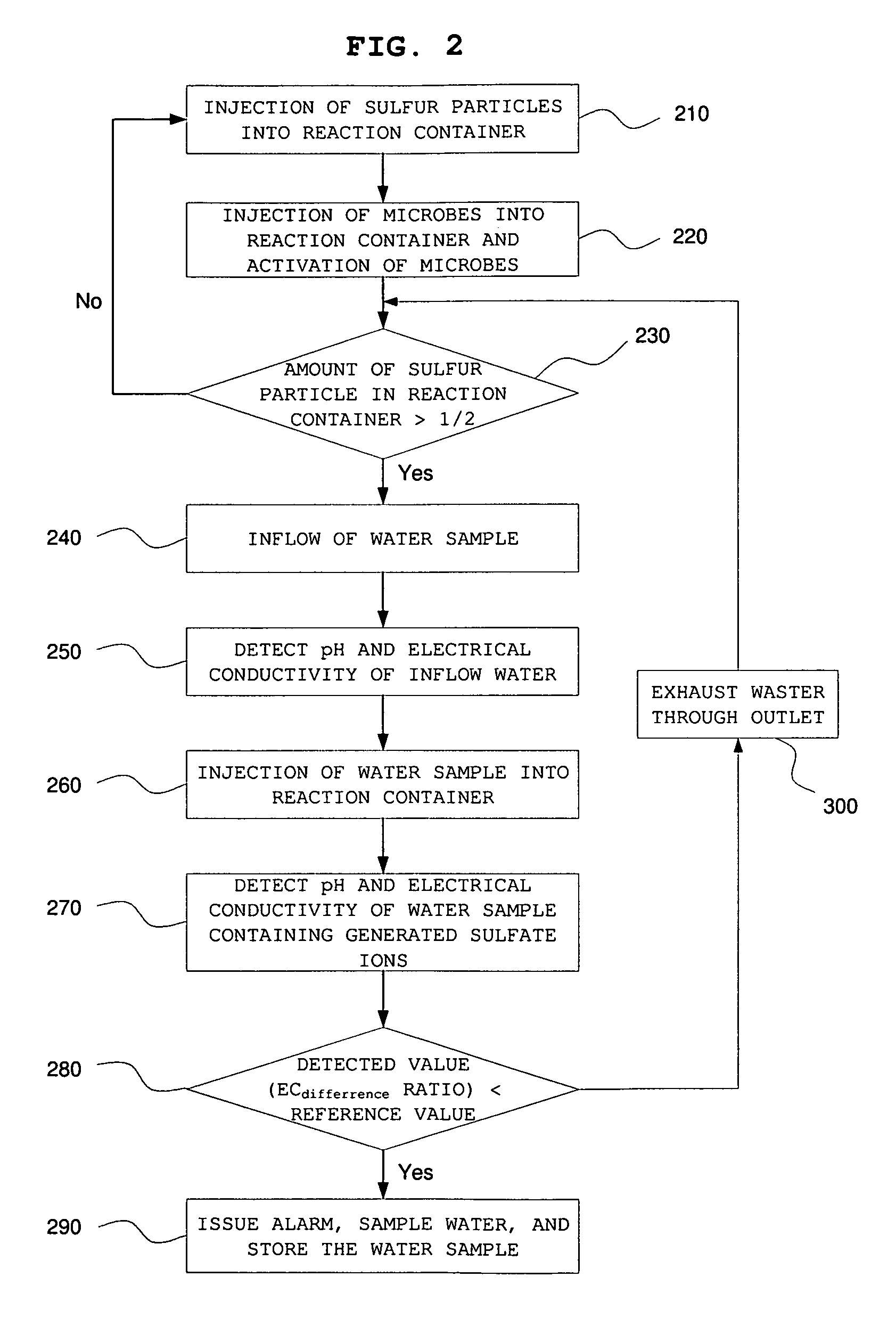Water toxicity detecting apparatus and method using sulfur particles
a technology of water toxicity and detection apparatus, applied in chemical methods analysis, instruments, biomass after-treatment, etc., can solve the problems of water pollution seriously affecting human beings' living, water cannot be safely used as drinking water, and all living beings have been contaminated with various toxic substances, etc., to achieve high reproducibility, low error, and detection of electrical conductivity
- Summary
- Abstract
- Description
- Claims
- Application Information
AI Technical Summary
Benefits of technology
Problems solved by technology
Method used
Image
Examples
first embodiment 1
[0079]1000 gm / L of sulfuric acid is diluted by a pure water having no buffer function, so that 0, 5, 10, 30, and 50 mg / L of sulfuric acid are prepared so as to measure electrical conductivity. As shown in a result of the measurement of the electrical conductivity of FIG. 3, it can be seen that the electrical conductivity is proportional to a concentration of sulfuric acid.
[0080]If toxic substances are flown into the water sample in the reaction container, a degree of activation of the microbes is lowered due to the toxic substance, so that the concentration of sulfuric acid is decreased. Accordingly, the electrical conductivity is also decreased. In other words, the concentration of sulfuric acid can be estimated based on the result of measurement of the electrical conductivity of the water sample. Therefore, it can be determined whether or not a toxic substance is flown into the water sample.
second embodiment
[0081]An actual river water is used to be flown into the apparatus shown in FIG. 1. The reaction container is filled with a 30 mL of sulfur particles. A size of the sulfur particles is in a range of 1 mm to 4 mm, and a porosity thereof is 50%. A temperature is maintained at 30° C. While an empty bed contact time (EBCT) of the inflow water is changed among 7.1, 8.3, 10.0, 12.5, and 16.7 minutes, the pH and electrical conductivity of the inflow water and the outflow water are measured. The EBCT is calculated by dividing a volume (30 mL) of the sulfur particles with a flow rate. AS the air injection method, aeration is continuously performed.
[0082]The actual inflow river water is a Class-1 water, and the pH and electrical conductivity thereof are 7.8 and 282 μS / cm, respectively. It can be seen that, when the EBCT is about 17 minutes, a difference of electrical conductivity between the inflow water and the outflow water is 271 μS / cm. In addition, it can be seen that, as the EBCT is shor...
PUM
| Property | Measurement | Unit |
|---|---|---|
| electrical conductivity | aaaaa | aaaaa |
| size | aaaaa | aaaaa |
| temperature | aaaaa | aaaaa |
Abstract
Description
Claims
Application Information
 Login to view more
Login to view more - R&D Engineer
- R&D Manager
- IP Professional
- Industry Leading Data Capabilities
- Powerful AI technology
- Patent DNA Extraction
Browse by: Latest US Patents, China's latest patents, Technical Efficacy Thesaurus, Application Domain, Technology Topic.
© 2024 PatSnap. All rights reserved.Legal|Privacy policy|Modern Slavery Act Transparency Statement|Sitemap



